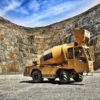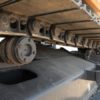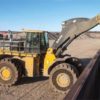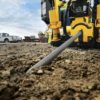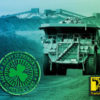The Mine Safety Health Administration: Safety in numbers
Health and safety in the mining industry is a conversation that everyone, at every level, from mine workers right through to CEO’s should be having. The mining industry is often dangerous and life threatening by its very nature and every mining operation owes it to the mine workers and the heavy machinery operators to ensure that every step has been taking to make it possible that they can go home safe and sound at the end of each working day.
Step forward the Mine Safety and Health Administration (MSHA) from the United States Department of Labor. Since 1978, MSHA has been operating under the Mine Act of 1977 with a clear vision – to prevent death, illness and injury from mining as well as to promote safe and healthful workplaces for U.S miners.
“The core responsibility of MSHA is to go out and inspect every mine in the nation four times a year to ensure that it is complying with the mine act,” says Joseph A. Main, Assistant Secretary of Labor.
Of course, health and safety legislation has been a matter of concern since before MSHA. It can be dated back to the creation of the U.S Bureau of Mines in 1910, which was effectively the research of the Government to prevent deaths in mines. It has been reported that the death toll was close to 3,000 per year during this time.
Fast forward to 1968, the a coal mine in Farmington, West Virginia exploded, killing 78 miners with an additional 19 bodies never recovered. A disaster of this magnitude forced the Government to act, enacting the Coal Mine Health and Safety Act – and following expanded protections to all mines in 1977, it is a law that is still in operation and governs the health and safety of U.S mines to this very day.
When the act was first instated, around 311 miners died in coal mining accidents. In 2016, there were only 12 deaths – the lowest in coal mining history.
For Main, this has been the culmination of years of hard work and commitment from MSHA since he was nominated by then President Barack Obama as Assistant Secretary in 2009.
“There was a need to improve the level of communication within MSHA and between the organisation and mine operators, stakeholders and the wider mining industry,” says Main.
Main believed that not only was there a need for more effective communication but also the need to strengthen the way in which MSHA applies the mining act across those 13,000 mines.
“We added new tools in our tool bag and have refocused our attention on some key areas to influence better outcomes,” he says.
One major and infamous are that the mining industry has been synonymous with is the exposure to coal mine dust and the Black Lung Disease. In 1968. Around 76,000 miners had died due to the black lung disease. Through his experience in the mining industry, working in mines through his younger years and representing miners through a health and safety committee, Main has been all too aware of the work needed to significantly reduce those exposed to the disease.
“Congress had it right in 1969 when it enacted legislation calling for an end to black lung disease, we are here now to finish the job,” said Main.
In 2009, MSHA launched the End Black Lund Disease campaign, the implementation of a comprehensive strategy that sought to increase the level of education and training in reducing mine dust and enhancing the enforcement of the mine act. This, Main states, was the first time in the history of mining that a revision to the mine act of 1977 was made to “reign in chronicle mine operators with outlandish violation rates and records.”
This was later revised and updated in 2010.
“Taking the mine act and adding more inspections, we targeted mines with particular problems for further inspections and really get to those problematic mines quicker and prevent them from getting out of control,” says Main.
“The quicker we act the quicker we can turn it around and make those mines for compliant, saving peoples lives in the process.”
And the proof is there to see. In 2010, MSHA identified 51 mines as “chronic violators” but as of 2016 that figure now stands at zero.
To get to a point where MSHA can record the safest year in mining history, it has taken something of a complete overhaul of operations. This has been a process that has not been without challenge. This included a backlog of around 80,000 citations and violations that had been contested but there simply wasn’t the manpower to process them. Compliance has been another major focus for Main, and he can proudly stand by the progress MSHA has made in this respect through improved compliance and guidance.
By 2010, the number of contested citations had fallen dramatically to around 40,000 and by 2016 it had fallen further to 18,000.
It doesn’t end there either, 12 deaths in 2016 (the lowest in mining history), the lowest recorded injury rate in the history of mining and even dropping the coal mine dust levels to historical lows.
“We’ve seen a huge cultural shift across the entire industry. The industry should get as much credit where its due for responding in such a positive way and making improvements,” says Main.
Main is keen to stress that for the industry to be healthier and safer, it is not the job of just one organisation, more so the job of everyone. Main has seen attitude in action, visiting mines across the country to find that measures have been put in place, technologies have been developed and overall mine safety is improving. It’s incredible progress, but it’s not a done deal.
“Not everyone is on that page, but the good news is a lot more mine operators are getting there as we move forward. Hopefully, 2017 will be a better year than 2016,” says Main.
As of January 2017, Joseph A. Main will step down from his role and his journey of transforming the MSHA will come to an end. But the transformation of the industry will continue to grow and Main leaves behind a legacy of change and a sense of hope.
“It’s up to everyone to continue our progress, to understand how we got here and how to move forward. If that attitude continues to exist, progress will come,” he says.
“Everything is yesterday’s story. Tomorrow is another day. I do believe that anybody that chooses the occupation of a miner, anybody that engages an input into a mine owes it to miners to give them a safe place to work and that’s a philosophy that I try to infect in everyone I talk to – this is the obligation that we all have.”
source: http://www.miningglobal.com/operations/2262/The-Mine-Safety-Health-Administration:-Safety-in-numbers
